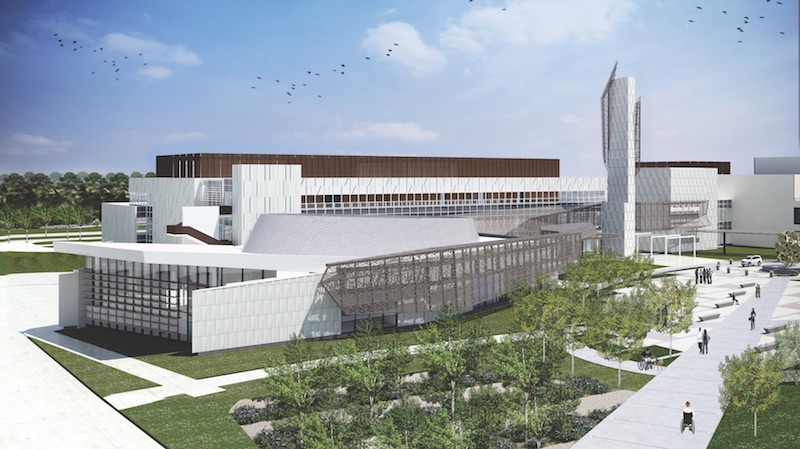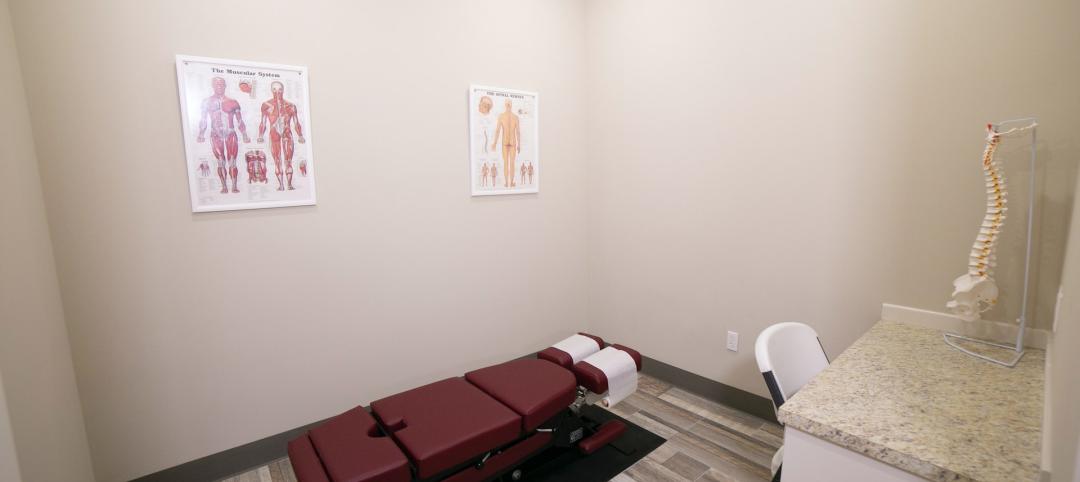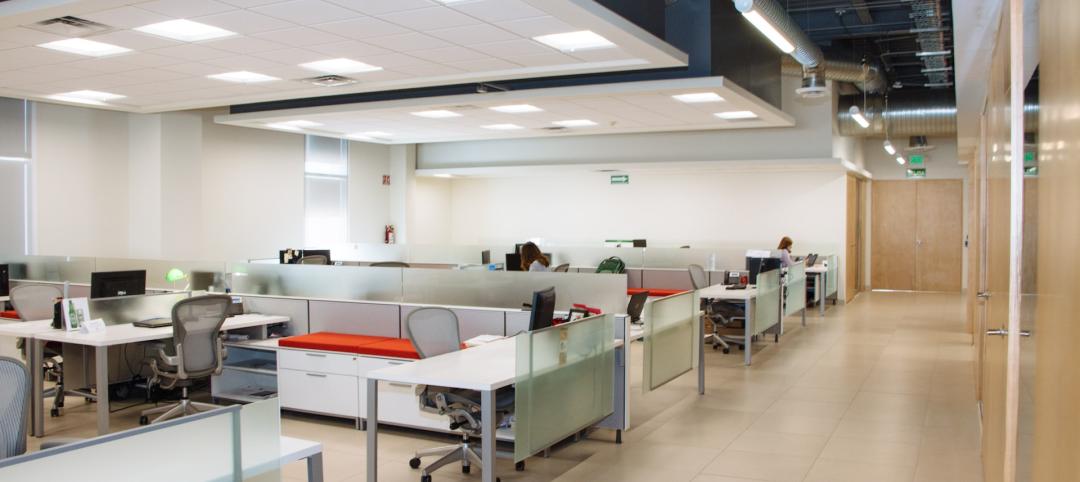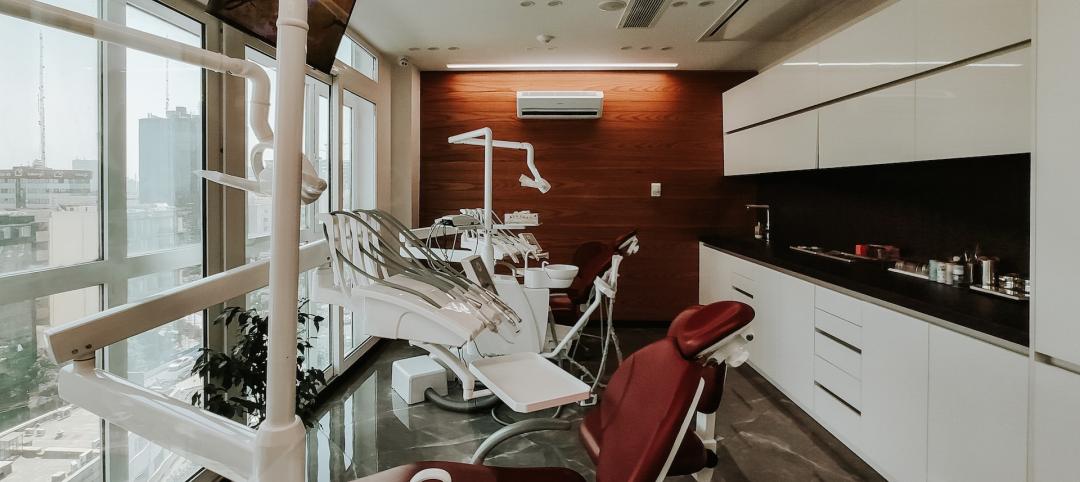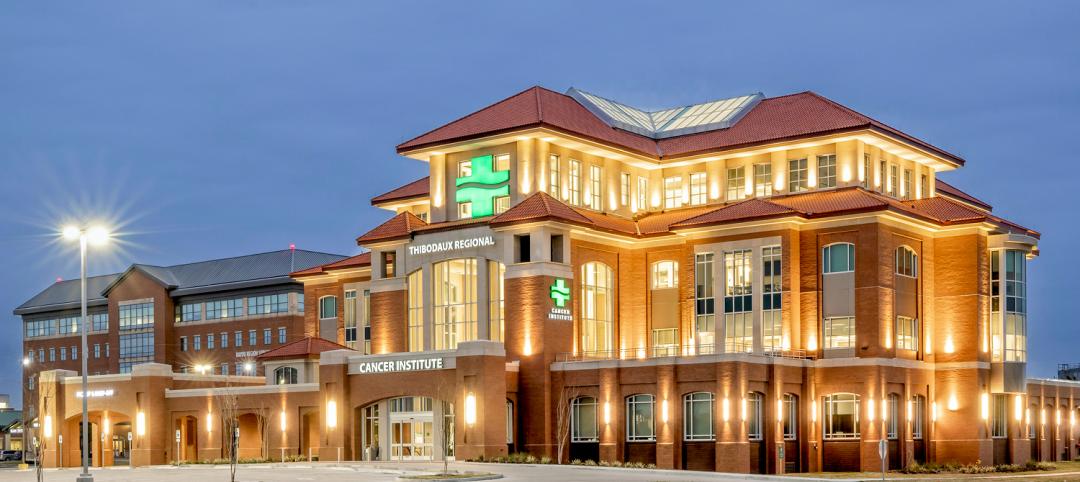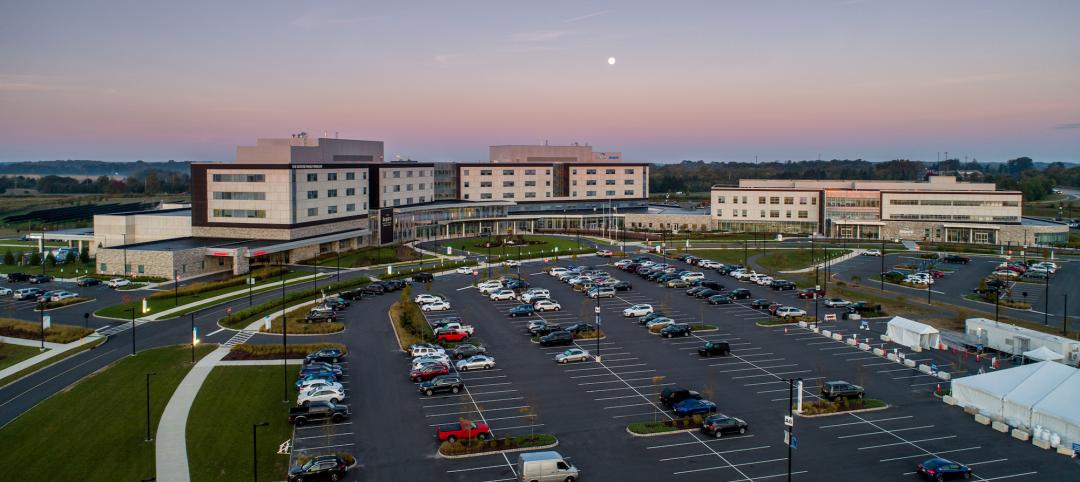The connection between the outdoors, health, and wellness has been gaining validity and acceptance within the design and medical communities. One of the fullest expressions of this nexus is occurring at Rancho Los Amigos National Rehabilitation Center, in Downey, Calif., the renowned recovery and rehab facility for patients with spinal cord and brain injuries, orthopedic disabilities, strokes, neurological disorders, and physical and developmental disorders.
The hospital’s ongoing $418 million revitalization and beautification, which is scheduled for completion in 2020, includes the renovation of its existing inpatient hospital, whose expansion will link it to a new outpatient building. A new wellness and aquatic therapy center already has opened, 15 months ahead of schedule.
But what makes this design-build project different will be the transformation of the facility’s entire campus into an outdoor recovery zone that encompasses a healing garden, therapy gardens, and terrain park.
Bonnie Khang-Keating, Principal and Vice President with SmithGroupJJR, the project’s lead designer, explains that the hospital—which is owned by Los Angeles County and has been in operation since 1888—has been serving the community from mostly older, modular buildings. By stacking those buildings vertically as part of the revitalization, and by adding a parking garage, SmithGroupJJR and Taylor Design, the project’s architect of record, gained considerable open space, which she estimates will account for 30–40% of the total campus.
Existing buildings and hardscape are being replaced with new dual-purpose outdoor spaces, healing gardens and terraces, and large plazas and amphitheaters that will also serve as physical therapy and terrain parks. “The hospital wants to hold events outside, like wheelchair basketball and Special Olympics,” says Khang-Keating.
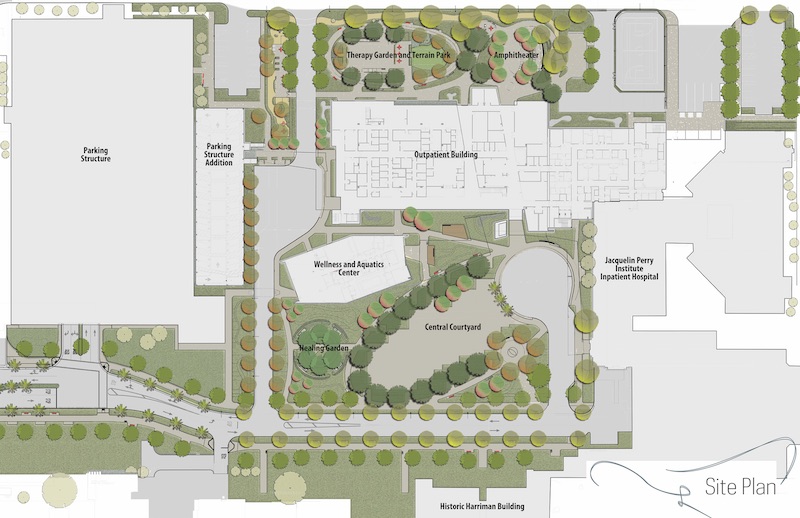 SmithGroupJJR and landscape architect KSA Design Studio's layout of the rehab center surrounds new and existing buildings with a variety of outdoor environments. Image: SmithGroupJJR.
SmithGroupJJR and landscape architect KSA Design Studio's layout of the rehab center surrounds new and existing buildings with a variety of outdoor environments. Image: SmithGroupJJR.
Taken together, the 29,170-sf therapy garden, the 8,400-sf horticultural garden, the 21,740-sf amphitheater, and the 8,790-sf sports court will account for 1.56 acres of open space on the hospital premises.
KSA Design Studio, the project’s landscape architect and a member of its design-build team, has focused on selecting the types of plants, ground cover, and other materials that would be used.
Khang-Keating notes that Rancho Los Amigos is unique among hospitals in that all of its outdoor-rehab activities are on the ground floor, which has the benefit of encouraging and expanding patients’ mobility. SmithGroupJJR programmed every foot of outdoor space with the expectation that it would be used every day, says Khang-Keating.
One of the goals of the design is to allow patients to learn to adapt to external conditions they will face once they’re discharged. Many former patients also return to the campus to mentor current patients.
Large sliding doors that line the entire wall of the outpatient therapy gyms further blur the boundary between indoor and outdoor space.
Because landscaping is usually the last thing that gets installed on a project, it can become an afterthought and get reduced or cut completely when budgets get tight.
But Khang-Keating says Rancho Los Amigos championed the indoor-outdoor concept right from the start. She says this is especially true of its CEO, Jorge Orozco, who started working at the hospital as a physical therapist in 1989.
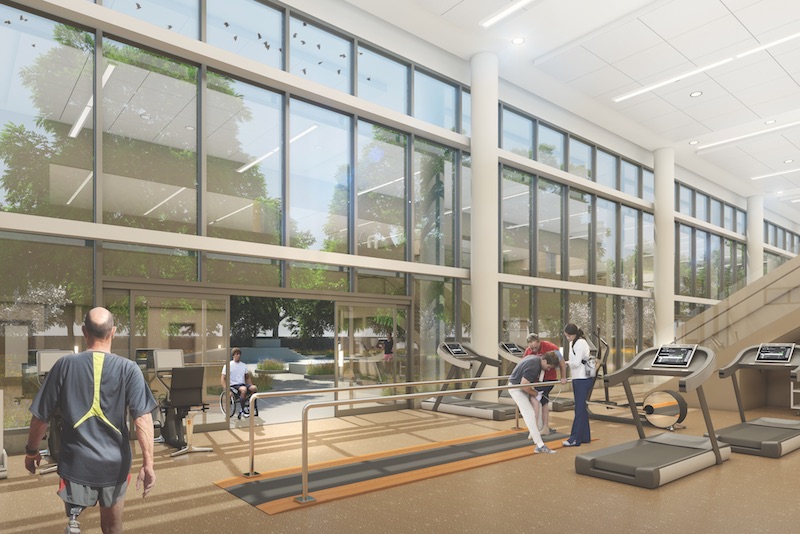 In the ground-floor gym (below), glass partitions blur the divide between indoors and outdoors. Image: SmithGroupJJR.
In the ground-floor gym (below), glass partitions blur the divide between indoors and outdoors. Image: SmithGroupJJR.
Related Stories
Healthcare Facilities | Dec 14, 2022
In Flint, Mich., a new health center brings together children’s mental and physical health services
Families with children who experience behavioral health issues often have to travel to multiple care facilities to see multiple teams of specialists. In Flint, Mich., the new Center for Children’s Integrated Services at Genesee Health System (GHS), a public mental health provider, brings together all of the GHS children’s programs, including its behavioral health programs, under one roof. It provides families a single destination for their children’s mental healthcare.
Adaptive Reuse | Dec 9, 2022
What's old is new: Why you should consider adaptive reuse
While new construction allows for incredible levels of customization, there’s no denying that new buildings can have adverse impacts on the climate, budgets, schedules and even the cultural and historic fabrics of communities.
Healthcare Facilities | Nov 17, 2022
Repetitive, hotel-like design gives wings to rehab hospital chain’s rapid growth
The prototype design for Everest Rehabilitation Hospitals had to be universal enough so it could be replicated to accommodate Everest’s expansion strategy.
Seismic Design | Nov 16, 2022
SPC-4D: 7 reasons California hospital building owners should act now to meet seismic compliance
Seismic compliance with the applicable California building codes is onerous and disruptive for building owners, especially for a building in the heavily regulated sector of healthcare. Owners of older buildings that house acute care services have a big deadline on the horizon—Jan. 1, 2030, the cutoff date to upgrade their buildings to SPC-4D.
BAS and Security | Oct 19, 2022
The biggest cybersecurity threats in commercial real estate, and how to mitigate them
Coleman Wolf, Senior Security Systems Consultant with global engineering firm ESD, outlines the top-three cybersecurity threats to commercial and institutional building owners and property managers, and offers advice on how to deter and defend against hackers.
Giants 400 | Oct 6, 2022
Top 60 Medical Office Building Contractors + CM Firms for 2022
PCL Construction, Adolfson & Peterson, Swinerton, and Skanska USA top the ranking of the nation's largest medical office building (MOB) contractors and construction management (CM) firms for 2022, as reported in Building Design+Construction's 2022 Giants 400 Report.
Giants 400 | Oct 6, 2022
Top 50 Medical Office Building Engineering + EA Firms for 2022
Jacobs, Gresham Smith, KPFF Consulting Engineers, and IMEG Corp. head the ranking of the nation's largest medical office building (MOB) engineering and engineering/architecture (EA) firms for 2022, as reported in Building Design+Construction's 2022 Giants 400 Report.
Giants 400 | Oct 6, 2022
Top 100 Medical Office Building Architecture + AE Firms for 2022
CannonDesign, Perkins Eastman, HGA, and E4H Environments for Health Architecture top the ranking of the nation's largest medical office building (MOB) architecture and architecture/engineering (AE) firms for 2022, as reported in Building Design+Construction's 2022 Giants 400 Report.
Giants 400 | Oct 6, 2022
Top 60 Outpatient Facility Contractors + CM Firms for 2022
Whiting-Turner Contracting Co., PCL Construction, Skanska USA, and Power Construction top the ranking of the nation's largest outpatient facility contractors and construction management (CM) firms for 2022, as reported in Building Design+Construction's 2022 Giants 400 Report.
Giants 400 | Oct 6, 2022
Top 40 Outpatient Facility Engineering + EA Firms for 2022
Jacobs, IMEG Corp., Gresham Smith, and TLC Engineering Solutions head the ranking of the nation's largest outpatient facility engineering and engineering/architecture (EA) firms for 2022, as reported in Building Design+Construction's 2022 Giants 400 Report.


